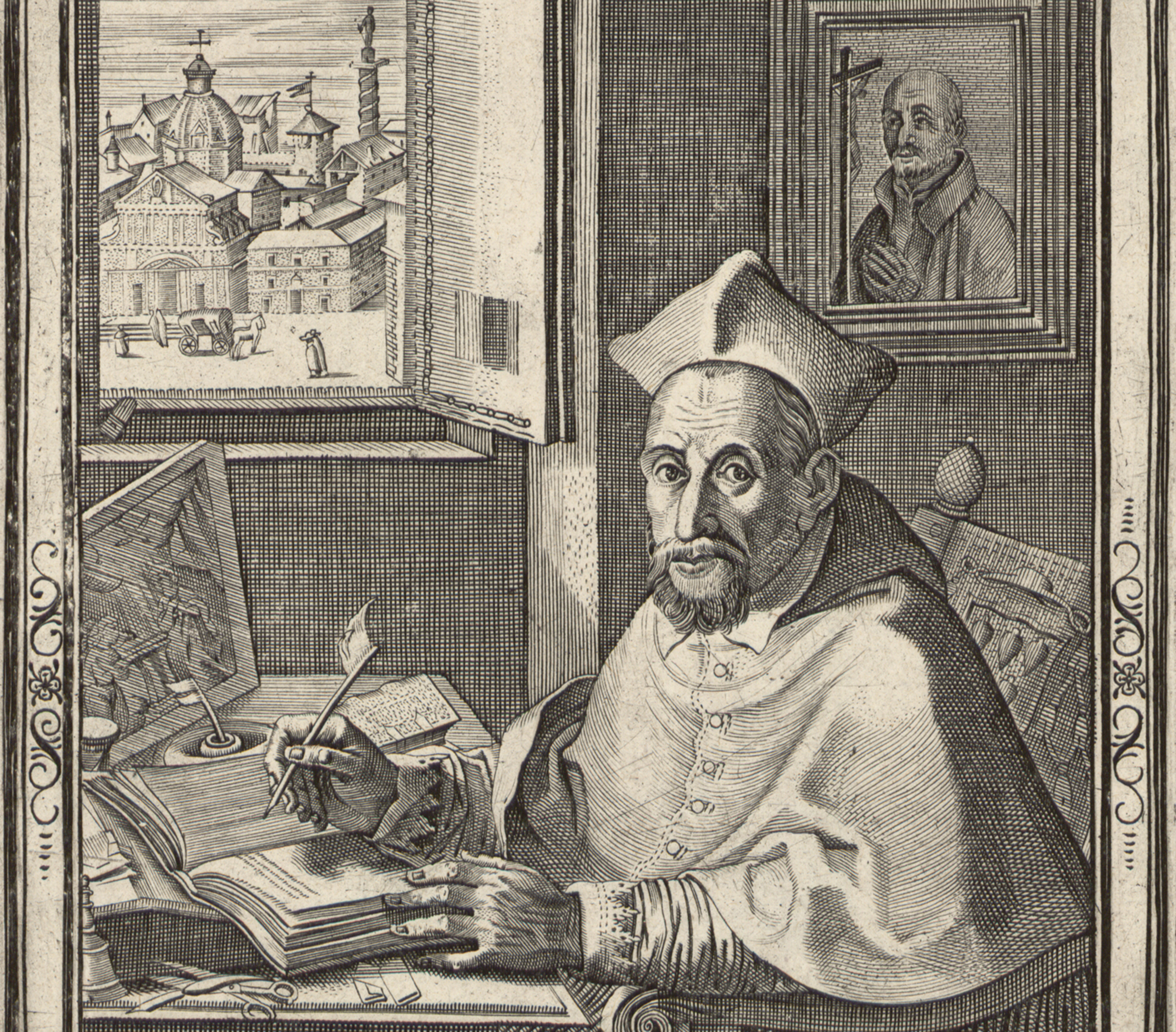- Home
- La Gregoriana
- 58 - To See All Things New in Christ
- Robert Bellarmine: Jesuit, Intellectual, Saint
Share:

Next November 17-19, 2021, the Gregoriana will hold
a conference on Saint Robert Bellarmine, its Patron Saint,
marking the fourth centenary of his death.
The following is a brief outline of a highly erudite figure
who lived during a complex historical period
September 17, 2021 marks the 400th anniversary of the death of Robert Bellarmine: a highly regarded figure within the Society of Jesus, as well as among faculty and students of the Pontifical Gregorian University - of which he is Patron Saint - and in the wider world of scholars. However, it should be noted that he is little known to the general public. The 400-year anniversary therefore provides an opportunity to reflect on a prominent figure of 16th and 17th century Catholic Church. His contribution to the history of thought, to theology and to the political and religious events of his time has in fact become a symbol of the Counter-Reformation, an epoch marked by bitter intellectual controversies - not to mention violence - arising from ways of conceiving the Christian faith and, more generally, reality, that were considered completely irreconcilable at the time.
A Saint placed on the Index
Let us start from the conclusion: contrary to expectations, his canonisation process was neither short nor simple. It began in 1622, the day after his death, and was not completed until 1923 with his beatification and his canonisation in 1930, followed by his proclamation as a Doctor of the Church (1931). Three centuries of discussions, often bitter, along with weighty silences, occurred in between. In fact, Bellarmine is not a figure that can be easily grasped, over and above hagiographic representations. Celebrating him in this particularly challenging year means first of all recognising not only his intellectual and theological stature, it also means acknowledging the complexity of a historical figure in an age marked by harsh conflicts and controversies, when politics and religion were inextricably intertwined.
Moreover, Bellarmine’s main theological work, Disputationes de controversiis Christianae fidei adversus huius temporis haereticos (Ingolstadt, D. Sartorius, 1586-1593), a compendium of his lectures at the Roman College, was an enormous success, but it was also subject to severe criticism. This drove Pope Sixtus V to order it to be placed on the Index because the Italian Jesuit’s argumentation concerning the potestas indirecta of the pontiff conflicted with the established doctrine on papal temporal authority over the whole world. The death of Sixtus V spared Bellarmine from being condemned.
Criticised and defended, yet scarcely studied
Upon Clement VIII’s elevation to the papacy, Robert Bellarmine became one of his main advisors on theological, and hence political, matters, since a number of sensitive issues were intertwined. Pope Clement VIII created him a cardinal in March 1599. However, the De Auxilis Controversy between the Dominicans and Jesuits on the relationship of divine grace and free will led to a deterioration of relations between Clement VIII and Bellarmine, who was created archbishop of Capua and appointed to his diocese (1602).
Following the conclaves of 1605 and Paul V’s elevation to the papacy, Cardinal Bellarmine returned to Rome, where he was highly regarded by the Pope and continued to lead a humble life in the Roman College. He did nonetheless play a prominent role in major theological, intellectual, political and religious debates of his time in Europe. Most notably, Bellarmine became involved in controversy with King James I of England over the obligation imposed on English Catholics to swear allegiance to the sovereign, and with Servite friar Paolo Sarpi with regard to the ecclesiastic interdict placed on the Republic of Venice (1606-1607).
The role he played as the leading theologian of Roman Catholicism has unquestionably contributed to his being the object of fierce criticism and ardent apology, and thus a historical analysis of his figure has been largely neglected. This has only been done over the past years, thanks to scholars such as Franco Motta. Yet much remains to be discovered and said about a fundamental figure in 16th and 17 th Century cultural and Catholic milieu.


